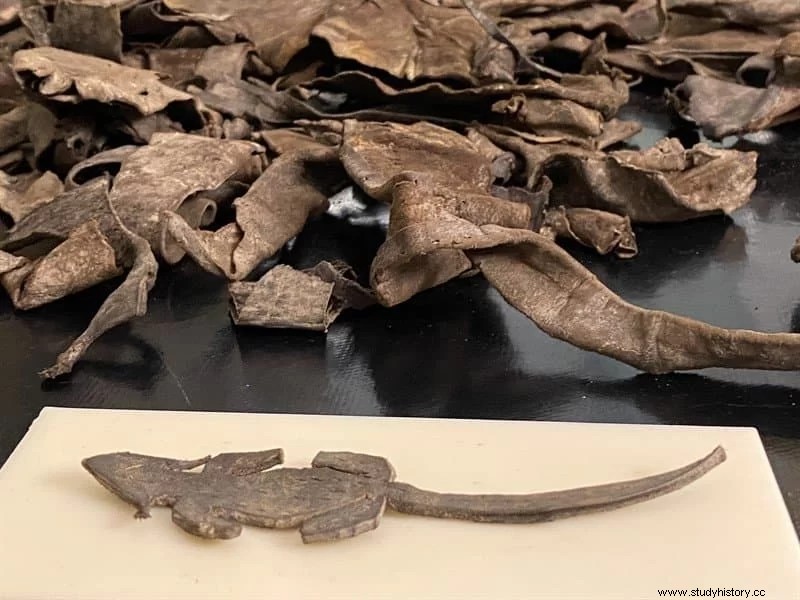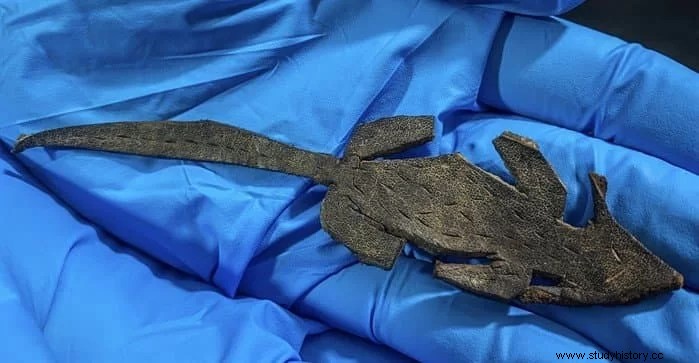Conservators at the Vindolanda Museum, UK, found a toy from the 2nd century AD, a piece of leather cut out in the shape of a small mouse. It is a flat piece that was found in a bag full of other scraps and scraps of leather.
The piece has angular, geometric contours, making it appear more like a lizard or gecko at first glance, although notches on the body and tail clearly indicate hair. It is 12.2 centimeters long by 2.6 wide.
It is part of the enormous collection of leather remains, such as bags and shoes, found in the subsoil of the ancient Roman camp of Vindolanda, due to the fact that they were buried in an anaerobic soil, without oxygen, thanks to which they did not rot and could be preserved. .

The little mouse comes from the residence of the commanding officer of the camp, probably belonging to one of his children. The bag it was in was discovered in 1993. It has been dated to around 105-130 AD, when the first cohort of Tungrains (present-day Belgium) was stationed there.
According to Barbara Birley, curator of the museum, although we have a significant amount of evidence of the presence of children in Vindolanda, we have very few toys. It would be wonderful if this little mouse had been a toy and a means of entertainment for a child, here on the northern border .

Interestingly, the real mice were omnipresent in all the houses and spaces of the camp. When the Vindolanda barns were excavated in 2008, the bones of thousands of mice were found under the floor, where they lived feasting on the ears of corn that fell between the cracks.
The Vindolanda site is located about two kilometers south of Hadrian's Wall.
The ancient camp of the Roman legions has so far provided more than 7,000 objects, many of them leather, and the largest collection of Roman footwear in Britain.
